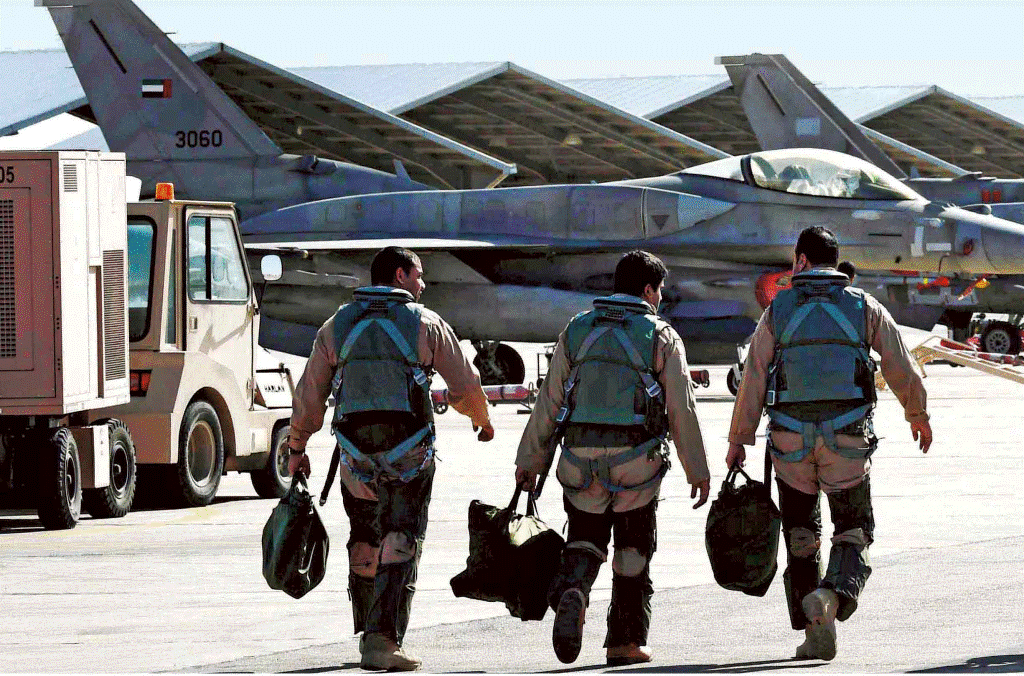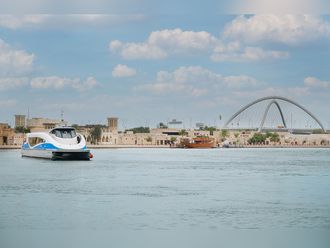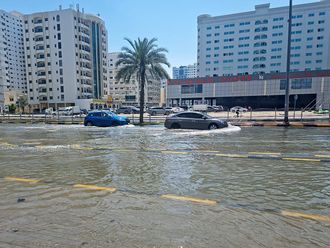
When the UAE and its five neighbouring states set up the Gulf Cooperation Council (GCC) in May 1981, they did not define an external threat but simply stated that their military build-up was required to protect their strategic ally growing oil wealth. A joint approach was emphasised and a significant clause in the GCC Charter was that an attack on any one of them would be considered an attack on all of them.
When Iraq occupied Kuwait in August 1990, leading to a war for its liberation, the other five did participate financially and militarily in the US-led combat operations to evict the invaders. By February 1991, that is within a few months, Kuwait was free and a possible Iraqi threat to Saudi Arabia was also negated.
There has been tension in the strategic oil-rich region due to one threat or another, and the GCC Charter, signed by heads of state of the UAE, Bahrain, Oman, Qatar, Kuwait and Saudi Arabia at a summit hosted by late President Shaikh Zayed in Abu Dhabi, has proved to be one of the world’s strongest diplomatic agreements. It reflects the promise each member makes to the others to secure one another’s territorial sovereignty.
The six states have refrained from naming any common enemy but then there is no need to. A threat can come from anywhere, and forces from Saudi Arabia, the UAE and Qatar have recently been in action in Yemen against the Al Houthi rebels, who have also threatened the kingdom.
Significantly, this is the third time that the GCC partners have reaffirmed their jointness in military operations, mostly involving air assets like fighter jets, midair refuellers, Airborne Early Warning and Control Systems (AWACS) aircraft, and special operations transporters like C 130J Hercules.
In 1981, when the GCC was formed, the annual defence budget of the six states was estimated at about $60 billion (Dh220.4 billion) They had begun their military acquisitions from scratch in the late 1970s, and their rising oil incomes gave them both the responsibility and means to protect themselves.
The US, Britain, Germany, France and Italy became the main source for weapons and systems, with the GCC opting for the best available defence technologies. For instance, while Saudi Arabia bought the formidable F15 Eagle aircraft from Boeing, the UAE opted for Mirage 2000-9, built to its own specifications, along with powerful Shaheen air-launched missiles.
Later, the UAE bought Block 60 F16 Falcon from Lockheed Martin with the highly advanced Active Electronically Scanned Array (AESA) radar, which even the US Air Force F16s did not then have. Abu Dhabi paid for developing this 21st-century combat radar and became the first country in Asia or Africa to have this capability.
The GCC states bought the best, and their emphasis was rightly on new contemporary technologies like sensors and seekers for precision attacks.
A decade and a half later, the question is have the Gulf States met their requirements, or aspirations. The answer is an apparent No.
The crisis in Yemen is an example. It is because of the reach and effective strike capability of UAE Air Force aircraft that Foreign Minister Shaikh Abdullah Bin Zayed
Al Nahyan could say with confidence in April that the Saudi-led Operation Decisive Storm in Yemen would restore stability and security in the region.
Besides Iraq, which was considered an ally before it invaded Kuwait at the head of the Gulf waterway, there had been some tension with Iran too, particularly as Tehran took control of three of the UAE’s islands and has at times claimed parts of other neighbours.
But many, if not all, of the threats or differences can be negotiated, particularly
if one has the financial and military muscle to act as a deterrent.
The worst scenario for any state in the Middle East or West Asia is a region dominated by irrational elements, armed both with fanaticism and weapons. The emergence
of Daesh in Iraq, Syria and Yemen has to be viewed in this perspective.
The Gulf States are globally viewed as liberal and pragmatic, and the GCC a stabilising factor in the troubled Middle East. That Daesh can get support from some political personalities, who want power or want to stay in power in the region, gives it a dangerous favourable tilt. And that in turn threatens the stability across the region from the West Asian Oman on the Arabian Sea to the North African Morocco on the Atlantic.
If anything, the Gulf States have to update and consolidate their military assets, particularly aircraft, as in modern times of TV and propaganda, right or wrong, precision engagement of a threat is the singular most important requirement. Collateral damage, or unintended loss of lives or property, can create huge upheavals and adverse public sentiment can be exploited by terrorists.
In addition to various types of combat jets and transporters or other aircraft, the Gulf States have to look at Unmanned Aerial Vehicles (UAVs), or better still, Unmanned Combat Aerial vehicles (UCAVs). In fact, the aircraft line-up at the Dubai Airshow will have the UAE’s own Yabhon UAVs. Made by Adcom, some of its variants are designed to carry combat payloads.
At the IDEX 2015 in February, it was officially stated that the UAE is in discussions with the US General Atomics for its Predator drone, designated Predator EP, as it will have specific UAE requirements. Details are not available, but the company’s Chief Executive for US and International Strategic Development, Dr Vivek Lall, told Gulf News that discussions between the US government and the UAE as well as Saudi Arabia were in progress.
Besides drones, the GCC states also need aircraft with newer generation of sensors and longer reach. The global majors are bringing in their best, both for static and flying displays.
One aircraft that will fly with victory rolls at the show will be the French omni-role Rafale. The company behind it, Dassault Aviation has recently won bids in three countries — Egypt, Qatar and India. Eurofighter, which is competing globally against Rafale, will also be there, courtesy of the British Royal Air Force.
According to the organisers, Fairs & Exhibitions, Boeing will display its Chinook heavy-lift and Apache combat helicopters, both of which recently won tenders in India. Airbus Defence & Space will bring its military transporter, Airbus A400M, and Textron, its Special Mission Grand Caravan. The global majors will bring many capabilities
to the show and many states of the region and from beyond will find capabilities of their interest. Modern aircraft have speed, reach and precision attack capabilities, and that is what the Gulf countries need in increasing numbers.
— The writer is a strategic affairs analyst and edits the India Strategic defence magazine












